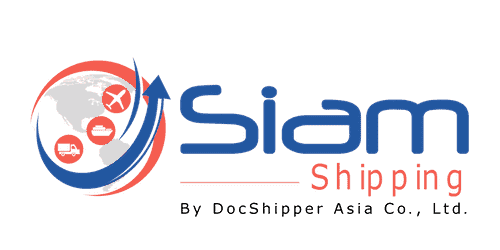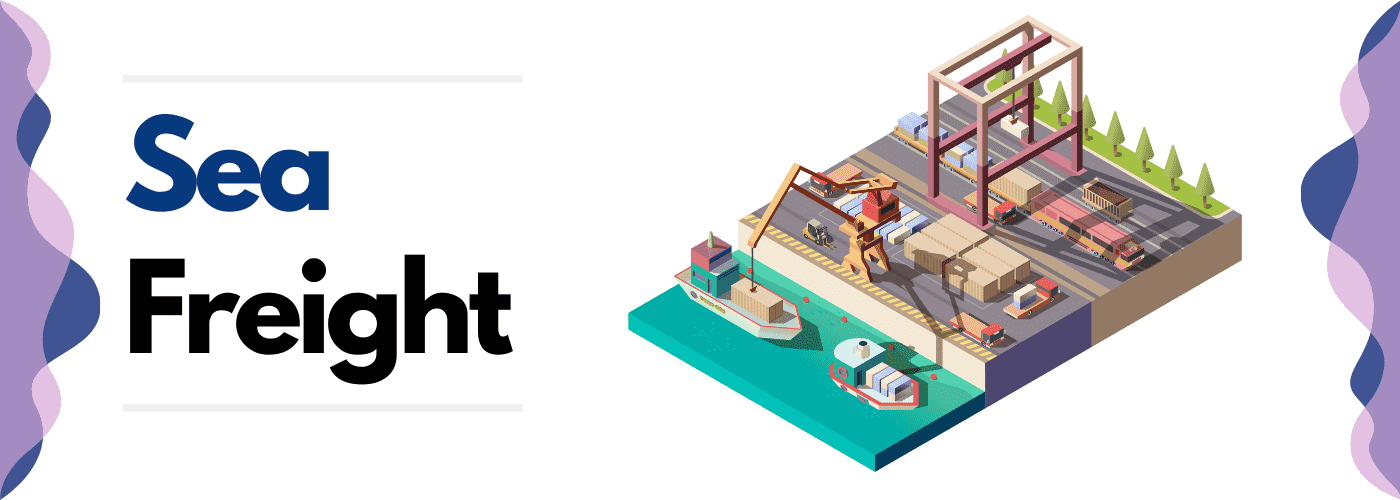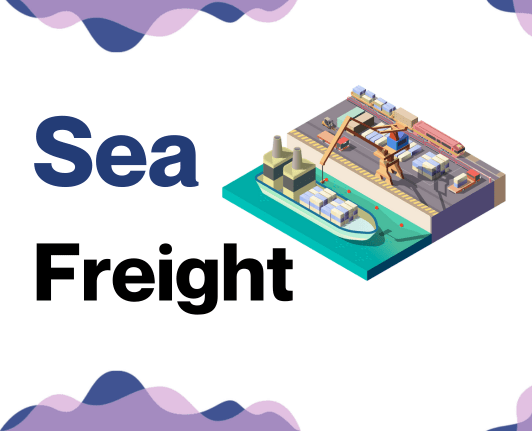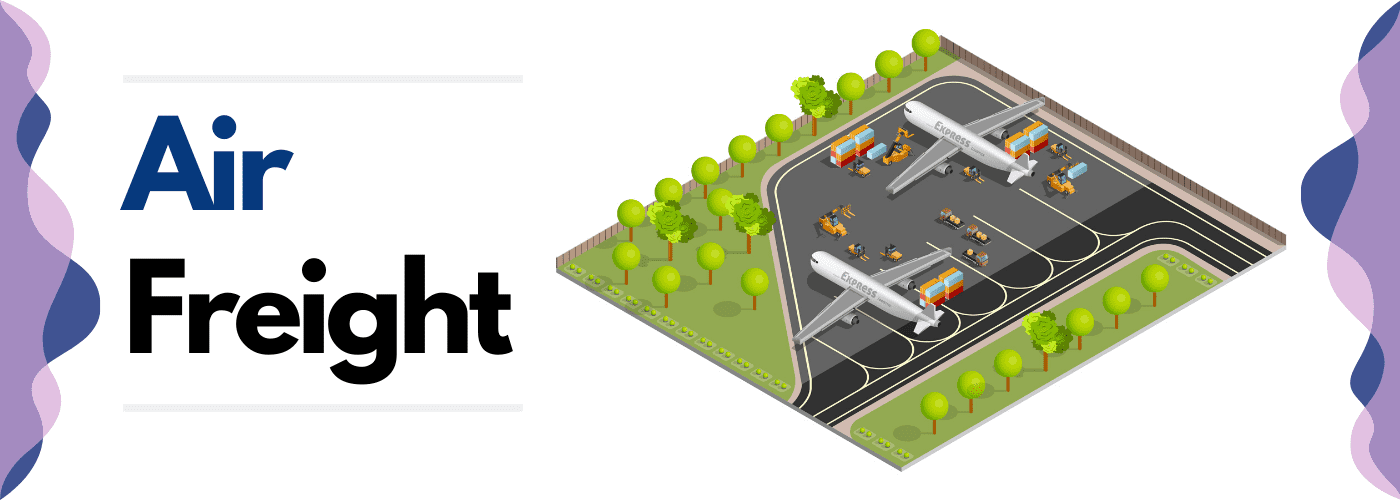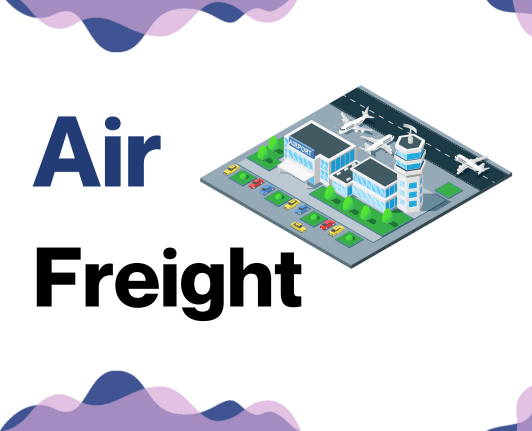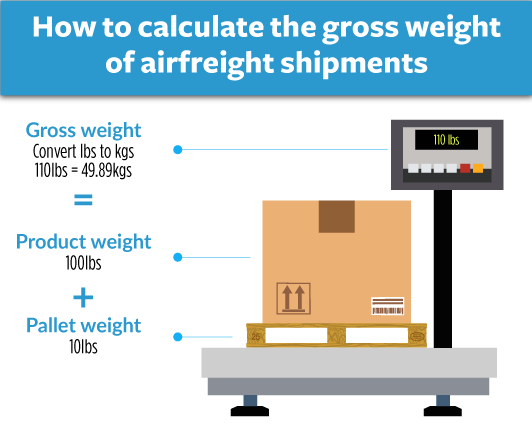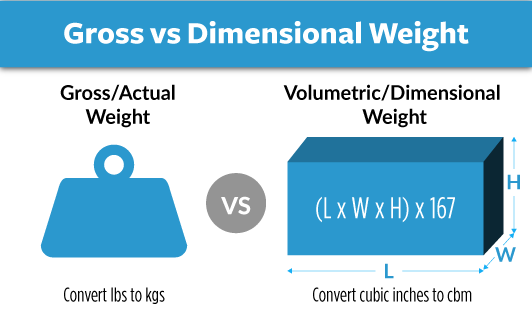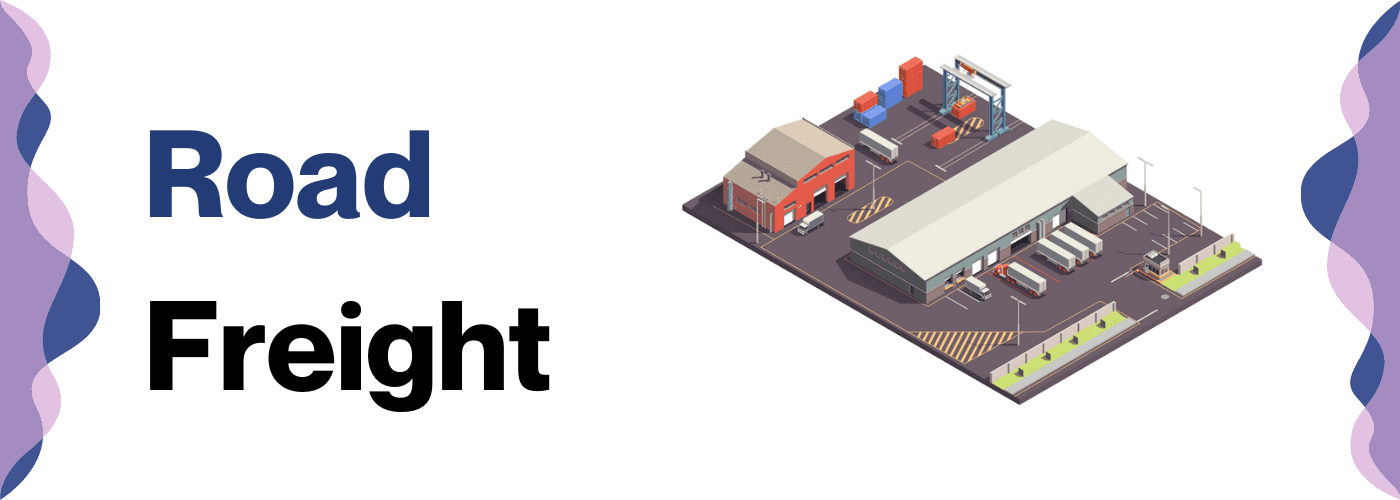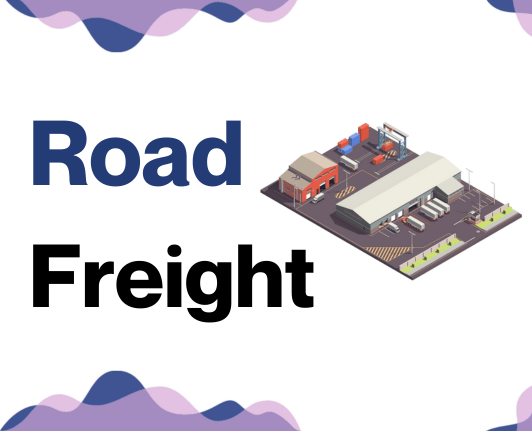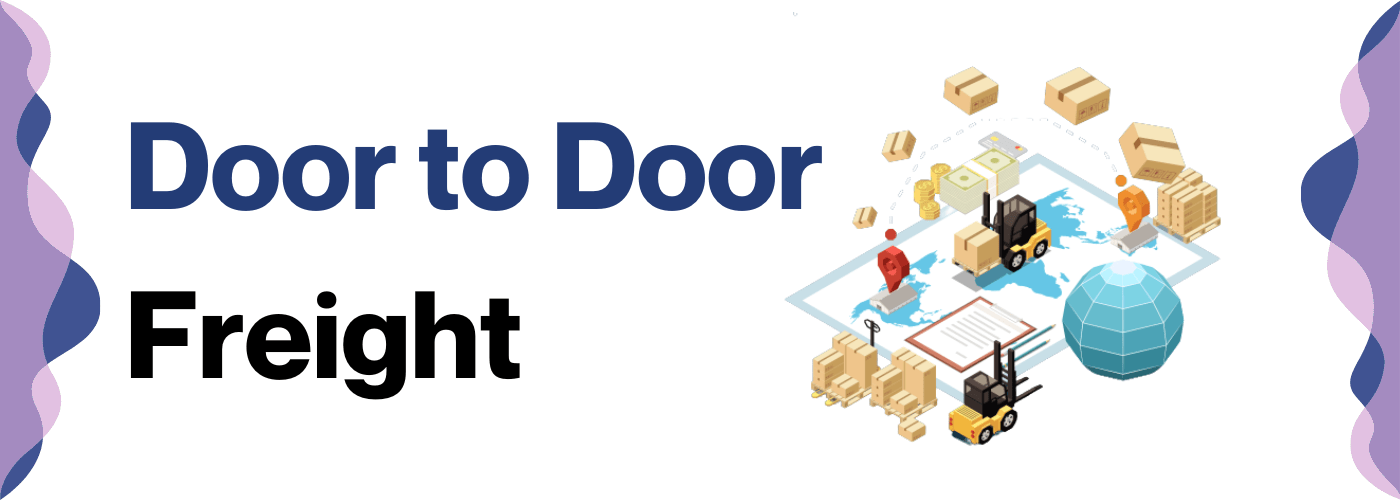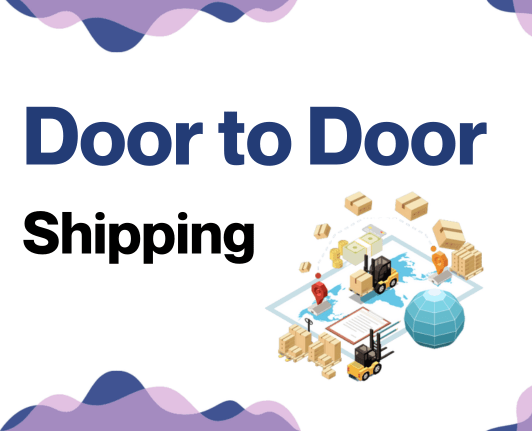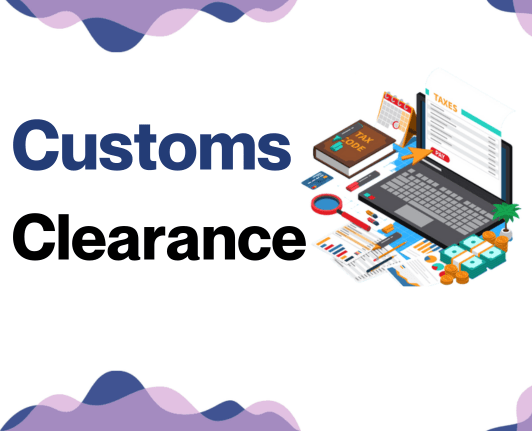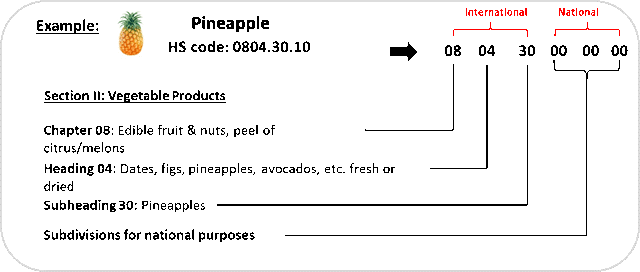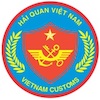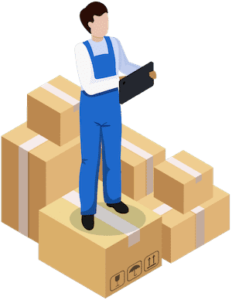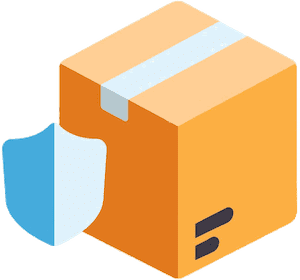We’ll break down the details of customs clearance, clarify duties and taxes, and provide practical advice specifically for businesses tackling this shipping route. If it all seems too complex, let Siam Shipping take over. As your trusted international freight forwarder, we’ll turn logistical challenges into seamless shipments between these countries.
Table of Contents
Which are the different modes of transportation between Thailand and Vietnam?
When it comes to shipping goods between Thailand and Vietnam, it's like choosing a path on a hiking trail. You want the most efficient route. The short distance and shared border seem perfect for road shipping, no need for a plane or ship ride. However, certain restrictions could shift the balance towards sea or air freight. It's all about understanding the terrain and the precious cargo you're carrying. Just like in a hiking adventure, the right choice will save time, money, and ensure your goods reach their destination in perfect condition.
How can Siam Shipping help?
Shipping goods between Thailand and Vietnam? Let DocShipper lighten your load. With expertly organized transportation, fuss-free customs clearance, and painless administrative procedures, we'll streamline your shipping process. Fast answers, reliable services, and peace of mind await. Need a free estimate in under 24 hours? Or simply want advice? Call our consultants free of charge. We're here for you.
Siam Shipping Tip: Consider ocean freight if:
- You are shipping large volumes or bulky items, as sea freight offers the most space at a cost-effective rate.
- You're not racing against the clock. Ocean freight takes its sweet time, especially when stacked up against other transport methods.
- Your supply chain is linked up with big-name ports. Think of it as the VIP lane on the maritime superhighway.
Sea freight between Thailand and Vietnam
Shipping goods between Thailand and Vietnam via ocean freight signals a bustling trade relationship, tapping into the pulse of both nations' industrial centers. Picture this journey like a marathon, not a sprint. It's slow-paced, yes, but where it isn't the fastest, sea freight wins in hauling high-volumes of goods cost-effectively. It's like moving your entire home at one go, rather than carrying each item separately!
Now, if you've tried this, it may seem like a game of Snakes & Ladders, right? Stumbling upon unpredicted pitfalls, experiencing a sense of feeling lost amidst sea shipping jargon and practices. Seem familiar? You're not alone. Many businesses grapple with these challenges, mishaps multiply, and confusion sprouts in this Thailand-Vietnam shipping route.
Breathe easy, the resolution to this complexity will soon be on your fingertips. There are well-marked paths, best practices, and specific rules that transform this labyrinth into a simple playground. Stay tuned as we unfurl these for you in the forthcoming sections. It’s like having a compass while navigating uncharted territories, pointing you in the right direction. Get ready to breeze through the process as we decode the sea shipping conundrum between Thailand and Vietnam.
Main shipping ports in Thailand
Laem Chabang:
Location and Volume: Laem Chabang lies in the Chonburi Province, southeast of Bangkok. It is a key node in Thai trade, processing over 8.4 million TEUs, making it the busiest port in Thailand.
Key Trading Partners and Strategic Importance: Trading partners include China, Japan, and the United States. This deep-water port receives the largest container vessels and thus, plays a strategic role in lowering maritime transport costs.
Context for Businesses: If expanding your business operations within Southeast Asia and beyond is part of your plan, Laem Chabang, with its connectivity and capacity, could be a crucial part of your shipping strategy.
Port of Bangkok:
Location and Volume: Located on the Chao Phraya River, the Port of Bangkok is the second busiest in Thailand, handling around 2.4 million TEUs annually.
Key Trading Partners and Strategic Importance: Main trading partners include China, Japan, the United States, and the European Union. The port is strategically important due to its proximity to the national capital, easing transitions to rail and road transport.
Context for Businesses: Businesses focusing on the Thai domestic market may find that utilizing the Port of Bangkok's direct routes aids distribution and supply chain efficiency.
Map Ta Phut:
Location and Volume: Situated in the province of Rayong, Map Ta Phut is considered one of the world's major ports for the petrochemical industry, seeing a shipping volume exceeding 0.8 million TEUs.
Key Trading Partners and Strategic Importance: The port has strong ties with trading partners in China, Japan, and the United States. It plays a pivotal role in the export of Thai industrial products.
Context for Businesses: Map Ta Phut could serve as your gateway if your business deals with petrochemicals or looks to leverage Thailand’s industrial carving in your strategy.
Sattahip Commercial Port:
Location and Volume: Located in Chonburi Province, near the Gulf of Thailand, Sattahip Commercial Port majorly serves bulk and military cargo with substantial cargo traffic.
Key Trading Partners and Strategic Importance: The port handles shipments from several countries, including China, the United States, and Japan. It’s particularly significant for businesses engaged in bulk imports or exports.
Context for Businesses: If you're dealing in commodities like grain, coal, or other bulk cargo, considering Sattahip Commercial Port as a part of your logistics operation could potentially optimize your shipping strategy.
Songkhla Deep Sea Port:
Location and Volume: Located in the southern hub of Thailand, Songkhla Deep Sea Port mainly handles liquid and dry bulk, capitalising on the trade routes across the Indian Ocean.
Key Trading Partners and Strategic Importance: Key trading partners include China, India, and Malaysia. Its strategic importance lies in its role as a major Southern Thai port, serving the needs of regional industries.
Context for Businesses: Shipping through Songkhla could be a great fit if your business deals with bulk goods and wishes to connect with Indian Ocean trade routes.
Chiang Saen Port:
Location and Volume: Situated on the Mekong River in northern Thailand, Chiang Saen is a river port that plays a secondary yet important role in Thailand's trade, dealing mainly with small to medium-sized shipments.
Key Trading Partners and Strategic Importance: Closely linked to Laos, Myanmar, and Southern China, it serves as a vital link in the Greater Mekong Subregion economic corridor.
Context for Businesses: If you're looking to tap into emerging markets in Laos or Southern China, considering river-based shipping via Chiang Saen Port could be a savvy move.
Main shipping ports in Vietnam
Location and Volume: Located in Northern Vietnam, by the eastern coastline, the Port of Hai Phong plays an integral role in the connection between Northern Vietnam and the rest of the world. With a shipping volume of over 4 million TEUs, it is the second busiest port in the country.
Key Trading Partners and Strategic Importance: Notable trading partners include the United States, China, Japan, and South Korea. Its strategic location near the Red River Delta makes it a prime choice for businesses seeking access to the bustling region.
Context for Businesses: Given its connectivity to major roads, railways and airports in Northern Vietnam and its regular schedules to major international ports, the Port of Hai Phong could be key in your expansion efforts in ASEAN and beyond.
Location and Volume: Situated in the middle of Vietnam's coastline, the Port of Da Nang is a critical transit point and gateway for the Central and West Highlands. It facilitates a shipping volume of over 700,000 TEUs annually, making it Vietnam's third largest port.
Key Trading Partners and Strategic Importance: Da Nang primarily handles exports to the United States, China, Singapore, and Japan. Its importance stems from serving as a central trade corridor for the Central Vietnam Economic Zone.
Context for Businesses: If you're after a reliable transit point for trade in Central Vietnam and the West Highlands, the multifunctional Port of Da Nang, with its modern infrastructure and facilities, could be an excellent fit for your logistics strategy.
Location and Volume: Highly significant as Vietnam's largest city, the Port of Ho Chi Minh City is located in the south of the country and manages a staggering shipping volume of approximately 6 million TEUs.
Key Trading Partners and Strategic Importance: The port's trading partners are widespread, with connections across the globe, particularly USA, China and Japan. Its strategic importance lies in its ability to handle high volume, diverse cargo types, and its location, serving the economic hub of Vietnam.
Context for Businesses: If your business requires a versatile and high-capacity shipping hub in Southern Vietnam, consider the Port of Ho Chi Minh City as a cornerstone for your shipping strategy. Its high connectivity to international partners ensures a degree of flexibility and reliability in your trade operations.
Should I choose FCL or LCL when shipping between Thailand and Vietnam?
Deciding between Full Container Load (FCL) and Less than Container Load (LCL), often termed consolidation, is a strategic sea freight choice that can make or break your shipping experience from Thailand to Vietnam. This crucial choice determines cost, delivery speed, and overall process success. Get ready to explore these two main shipping options as we deep dive into their specific advantages and drawbacks, helping you make an informed decision that serves your unique shipping requirements. Let's unwrap the complexities of sea freight!
LCL: Less than Container Load
Definition: LCL (Less-than Container Load) involves sharing a container for shipping goods, suitable when your cargo doesn't fill an entire container, known as lcl shipment or lcl freight in the shipping industry.
When to Use: If your cargo volume falls under 13/14/15 cubic meters (CBM), then LCL provides a more cost-effective and flexible option. It eliminates the need to wait for enough goods to fill an entire container, accelerating your shipping timeline.
Example: Let's take a business that exports handmade furniture from Thailand to Vietnam. Their orders often vary in size and aren't large enough to require a full container. Using LCL, they can ship their furniture as and when orders come in, sharing container space with others, thus optimizing cost and delivery time.
Cost Implications: Since you're only paying for the space you use within the container, LCL can be more budget-friendly for smaller shipments. But remember, overall per-unit shipping cost could be higher compared to Full Container Load (FCL), given the additional handling involved for consolidation and deconsolidation. So, while LCL offers flexibility and cash flow benefits, it's worth calculating your per-unit cost to ensure it remains cost-effective.
FCL: Full Container Load
Definition: Full Container Load (FCL) shipping is a method where you rent an entire container (20'ft or 40'ft) for transporting your goods. The benefits? Only your freight is inside, protecting it from the risk of contamination by other goods.
When to Use:
FCL is notably cost-effective when it comes to high-volume shipments, typically anything above 13/14/15 CBM. This is where economies of scale kick in, making each unit good cheaper to ship.
Example:
For instance, a Thai company manufacturing auto parts decides to transport large volumes to a vehicle assembly plant in Vietnam. Considering the size of their cargo, opting for FCL shipping would be the best option.
Cost Implications:
Per-unit, an FCL shipping quote is usually cheaper than Less than Container Load (LCL) for high volume shipments, not to mention the added security as the FCL container is sealed from origin to destination. However, the cost of FCL might not be economical for smaller loads, as you pay for the whole container, regardless of how full it actually is.
Unlock hassle-free shipping
Discover the ease of international shipping with DocShipper, your reliable partner in freight forwarding. Our ocean freight professionals simplify your decision between consolidation and full container shipment by assessing crucial factors like cargo volume, transit time, and cost-effectiveness. Equip your business with the right resources to avoid inefficiencies and maximize profit. Ready to embark on your seamless shipping journey? Reach out to us today for a free, no-obligation freight estimate.
How long does sea freight take between Thailand and Vietnam?
Generally, sea freight from Thailand to Vietnam takes 3 to 7 days, depending on various factors. Transit times consider factors such as the specific origin and destination ports, total weight, and the type of cargo being transported. For a precise and customized quote that suits your shipping needs, seeking assistance from an international freight forwarder like DocShipper is highly suggested.
Following is a representation of the average transit times for sea freight between the main ports of both countries.
| Origin (Thailand) | Destination (Vietnam) | Transit Time (days) |
| Laem Chabang | Cat Lai | 4 |
| Bangkok | Hai Phong | 7 |
| Songkhla | Da Nang | 5 |
| Ranong | Cai Mep | 5 |
*Bear in mind that these are average times, real-time may vary based on aforementioned factors.
How much does it cost to ship a container between Thailand and Vietnam?
Determining ocean freight rates for shipping a container from Thailand to Vietnam depends on numerous factors. The cost can fluctuate widely due to variables such as the points of loading and destination, the carrier selected, the nature of the goods, and unpredictable monthly market shifts. This complexity makes it challenging to pinpoint an exact shipping cost. However, fret not! You won't embark on this journey alone.
Our seasoned shipping specialists are at hand to tailor a quote for your specific shipment, ensuring you receive the most competitive rates for your unique circumstances. We deeply understand each case is distinct and requires personalized handling. Rest assured, we’re committed to guiding you through to a cost-effective shipping solution.
Special transportation services
Out of Gauge (OOG) Container
Definition: Out of Gauge (OOG) containers are a unique freight option specializing in items that do not fit traditional shipping containers due to their dimensions. These containers have flat racks with collapsible ends for larger items.
Suitable for: Out of gauge cargo including long, wide or heavy goods that exceed standard container dimensions.
Examples: Industrial machinery, construction equipment, pipelines, or windmill parts.
Why it might be the best choice for you: If your business deals with oversized items, the flexibility offered by OOG containers could be a vital asset in ensuring secure transport between Thailand and Vietnam.
Break Bulk
Definition: Break Bulk refers to goods that have to be loaded individually, and not in containers nor in bulk as with oil or grain. It involves goods being loaded 'loose' onto the ship.
Suitable for: Irregularly shaped and sized goods, or goods that require special handling.
Examples: Large machinery, construction materials, cables, logs, or steel beams.
Why it might be the best choice for you: Break bulk is convenient if you're dealing with unique, hard-to-handle items that don't fit in conventional containers or are not suitable for bulk shipping.
Dry Bulk
Definition: Dry Bulk is a shipping method where granular and dry commodities are transported in a ship’s hold without any packaging.
Suitable for: Commodities like coal, grains, and minerals.
Examples: Grains, coal, iron ore or construction materials like sand and gravel.
Why it might be the best choice for you: If your business involves loose cargo loads of granular products in large volumes, dry bulk shipping can present a cost-effective and efficient option.
Roll-on/Roll-off (Ro-Ro)
Definition: The Roll-on/Roll-off (Ro-Ro) method involves cargo that rolls on and off a specialized ro-ro vessel on their own wheels or using a platform vehicle.
Suitable for: Motor vehicles and machinery.
Examples: Cars, trucks, tractors, trailers, busses, or machinery like excavators.
Why it might be the best choice for you: If your business focuses on vehicles or machinery that can be driven on and off the vessel, Ro-Ro is a highly convenient and efficient shipping method.
Reefer Containers
Definition: Reefer containers are refrigerated, providing temperature-controlled environments for goods.
Suitable for: Perishable goods requiring specific temperatures.
Examples: Seafood, fruits, vegetables, meats, pharmaceuticals, or other temperature-sensitive goods.
Why it might be the best choice for you: If your business specializes in goods that need to remain at certain temperatures during transit, the use of reefer containers can maintain the quality and safety of your products throughout the shipment.
DocShipper is here to assist in navigating these options. Our team can provide invaluable insights and help tailor solutions based on your specific needs. To learn more or to receive a free shipping quote in less than 24 hours, please contact us.
Siam Shipping Tip: Consider Air freight if:
- Time's ticking and you can't wait. Air freight is like the express train of shipping; it's the quickest way to get your stuff from A to B.
- You're not shipping a warehouse. If your cargo is under 2 CBM, air freight is a snug fit for your smaller haul.
- Your supply chain ends somewhere off the beaten path. Airports are everywhere, so you can get your goods to those hard-to-reach spots.
Air freight between Thailand and Vietnam
Imagine needing to zip a batch of freshly crafted time-sensitive electronic components from the buzzing factories of Thailand to the booming tech-hubs of Vietnam. That's where air freight swoops in like a super-powered eagle, shaving off precious time for ultra-fast, supremely secure deliveries. It's a match made in the skies for small, high-value goods where every tick of the clock counts.
But, buckle up—this eagle can turn into a hungry vulture if you stumble on the tricky ground of the cost-game. Many shippers tumble into common pitfalls, like miscalculating the cost based on incorrect weight measurements. That's like turning a blind eye when the vulture swoops in, leaving you with a hefty freight bill while feasting on your profits. Stay tuned, and we'll arm you with the best practices to outsmart the freight game without losing anyone's feathers.
Air Cargo vs Express Air Freight: How should I ship?
Choosing between Air Cargo and Express Air Freight for your Thailand to Vietnam shipping needs can feel a bit like picking your favorite child! In essence, Air Cargo is when your goods hitch a ride in an airline's belly, whereas Express Air Freight is more like having a dedicated private jet for your parcels - faster, but naturally more costly. So let's figure out which choice is best for your business and pocket!
Should I choose Air Cargo between Thailand and Vietnam?
Transporting goods via air cargo between Thailand and Vietnam can indeed be a feasible option, especially when dealing with shipments exceeding 100/150 kg (220/330lbs). With airlines like Thai Airways and Vietnam Airlines playing a significant role in freight operations, providing comprehensive tracking and reliable service, you’ll have the assurance that your cargo is in safe hands.
Although airfreight incurs higher costs compared with other methods, it can prove more cost-effective for larger consignments. Be aware, however, of longer transit times due to rigid schedules. Assess your budget and priorities thoroughly before choosing this option.
Should I choose Express Air Freight between Thailand and Vietnam?
Express Air Freight, using dedicated cargo planes with no passengers, is an optimal choice for smaller shipments under 1 CBM or 100/150 kg (220/330 lbs). Renowned firms like FedEX, UPS, and DHL specialize in this service, offering speedy delivery and reliable tracking. If your business frequently ships these types of cargos between Thailand and Vietnam, opting for Express Air Freight could ensure swift delivery and improved logistics efficiency. Think quick, think express – it's an option worth considering for your interspersed and smaller consignments.
Main international airports in Thailand
Suvarnabhumi Airport
Cargo Volume: Suvarnabhumi Airport handled approximately 1.5 million tons of cargo in 2019, making it one of the busiest cargo airports in Southeast Asia.
Key Trading Partners: China, United States, Japan, Hong Kong and Singapore.
Strategic Importance: Known as the most modern cargo airport in Thailand, it plays a significant role in the Belt and Road initiative, positioning it as an integral logistics hub.
Notable Features: The airport boasts a Free Zone area for international cargo transfers and a modern Cargo Village equipped with a state-of-the-art system for efficient cargo management.
For Your Business: If your business deals with high-value or time-sensitive products, Suvarnabhumi’s speed and efficiency could be a crucial asset in managing your supply chain.
Don Mueang International Airport
Cargo Volume: As a smaller cargo hub, this airport handles over 176,000 tons of cargo annually.
Key Trading Partners: Primarily serves the domestic market but also handles international freight to countries like China, India, and Japan.
Strategic Importance: While it may not be a primary cargo hub, Don Mueang offers a less congested alternative to Suvarnabhumi Airport, therefore ensuing quick turnarounds.
Notable Features: Despite being more modest in size, it still delivers quality services due to its modern cargo facilities and efficient cargo handling systems.
For Your Business: If your business has smaller, less frequent shipments, or those destined for the domestic market, Don Mueang offers a viable solution with quicker clearances due to less congestion.
Hat Yai International Airport
Cargo Volume: It handles around 18,000 tons of cargo annually.
Key Trading Partners: Keys trading partners include China, Malaysia, and Singapore.
Strategic Importance: As the fourth busiest airport in Thailand, its locality near Malaysia and the Southern Economic Corridor makes it strategically important.
Notable Features: Its proximity to industrial and agricultural areas is significant for businesses seeking access to these markets.
For Your Business: If your business focusses on agricultural or industrial goods, Hat Yai’s location could provide convenient access to these markets. It's excellent for operations focused on the regional level.
Chiang Mai International Airport
Cargo Volume: This hub handles about 20,000 tons of cargo per year.
Key Trading Partners: Main trading partners include China, Hong Kong, and South Korea.
Strategic Importance: Being located close to Northern Thailand's industrial and agricultural zones, Chiang Mai Airport is essential to the region's economy.
Notable Features: Features a Single Window Service for cargo transfers, aiding in the efficient handling and shipping of cargo.
For Your Business: Chiang Mai is an excellent choice for businesses seeking a single point of contact for logistics in Northern Thailand and a gateway to reach Asian markets.
Phuket International Airport
Cargo Volume: With 40,000 tons of cargo handled annually, the airport provides a significant connection to the southern region.
Key Trading Partners: Notable partners include China, Singapore, and Australia.
Strategic Importance: Phuket is known as an international tourism hub, but its air cargo services are vital for local fisheries and industries.
Notable Features: A skilled cargo handling team ensures the swift transfer of goods, including live seafood, an important local product.
For Your Business: If your business operates in seafood, agriculture, or tourism-related industries, Phuket's cargo services can provide a strategic advantage.
Main international airports in Vietnam
Tan Son Nhat International Airport
Cargo Volume: 1.6 million metric tons
Key Trading Partners: China, Taiwan, South Korea
Strategic Importance: Vietnam's largest and busiest airport, strategically located in Ho Chi Minh City - the country's financial center.
Notable Features: Situated closely to seaports in the South, allowing for streamlined sea-air logistics.
For Your Business: If your goods are destined for Southern Vietnam, or for markets including China, Taiwan, and South Korea, Tan Son Nhat's huge cargo handling capability and sea-air logistics make it a smart consideration.
Noi Bai International Airport
Cargo Volume: Over 900,000 metric tons
Key Trading Partners: China, Japan, South Korea
Strategic Importance: Located in Hanoi, Noi Bai is the gateway to the Northern region and is crucial for the transportation of goods from the industrial zones in Northern Vietnam.
Notable Features: The largest cargo terminal in the northern region with a capacity of up to a million tons per year.
For Your Business: If your logistics needs involve swift transportation to Northern Vietnam or you trade predominantly with China, Japan, or South Korea, Noi Bai is a fit for your business.
Da Nang International Airport
Cargo Volume: 40,000 metric tons
Key Trading Partners: Japan, South Korea, Taiwan
Strategic Importance: Situated in Central Vietnam, it provides an important transport link between the north and the south.
Notable Features: Beneficial for businesses due to its proximity to industrial and export processing zones in Central Vietnam.
For Your Business: Ideal for businesses requiring efficient transport options in and out of Central Vietnam. Highly beneficial for Japanese, South Korean, and Taiwanese trade lines.
Phu Quoc International Airport
Cargo Volume: Less comparably
Key Trading Partners: Mainly domestic partners
Strategic Importance: Essential for businesses associated with tourism and locally produced goods such as seafood and crafts.
Notable Features: Focuses on domestic and nearby international flights.
For Your Business: The Phu Quoc Airport could be of interest if your goods cater to the growing tourism market, locally produced goods such as seafood, or if you're looking for domestic transit.
Cam Ranh International Airport
Cargo Volume: 8,000 metric tons
Key Trading Partners: Mainly domestic partners
Strategic Importance: Vital for businesses in the South Central Coast region of Vietnam or those focusing on domestic transport.
Notable Features: Direct access to the Vietnam East–West highway for quicker and easier land transit.
For Your Business: If your shipping needs revolve around domestic transport or cater to regional supply chains, the Cam Ranh International Airport could be the appropriate choice.
How long does air freight take between Thailand and Vietnam?
On average, air freight between Thailand and Vietnam may take between 1 to 3 days. However, the actual transit time can fluctuate depending on factors such as the specific airports involved, the weight of the cargo, and the nature of the goods being shipped. For a precise timeline, it's best to consult with an experienced freight forwarder like DocShipper.
How much does it cost to ship a parcel between Thailand and Vietnam with air freight?
Average air freight costs between Thailand and Vietnam range from $3 to $7 per kg, although this is a broad estimate. Several factors influence the final price, such as distance from airport departure and arrival, parcel dimensions, its weight, and the nature of the goods. Hence, it's not feasible to provide a precise shipping cost offhand. However, rest assured our dedicated team strives to offer the most competitive rates by quoting on a case-by-case basis tailored to your unique needs. Contact us to receive a free quote within less than 24 hours.
What is the difference between volumetric and gross weight?
Gross weight refers to the actual weight of a package, measured in kilograms. On the other hand, volumetric weight is a weight estimate that takes into account the dimensions of a package, considering the package's size and volume.
Now, let's explore how each is calculated in Air cargo and Express Air Freight services.
The gross weight is straightforwardly calculated by putting your shipment on a scale and noting down the result, in kilograms. For example, your package might weigh 50Kg (or around 110 lbs).
Volumetric weight calculation is a bit more complex. It depends on the total volume the package occupies. The formula used for Air cargo is Length(cm) x Width(cm) x Height(cm) / 6000 = Volumetric Weight(kg). For Express Air Freight, it's slightly different: Length(cm) x Width(cm) x Height(cm) / 5000 = Volumetric Weight(kg).
Say your package is 40cm by 30cm by 20cm, then, in Air cargo, its volumetric weight would be 4 kg (or around 8.8 lbs), but in Express Air Freight, it would be 4.8 kg (or roughly 10.5 lbs).
The main reason these calculations are important is that freight charges aren't solely based on the actual weight of your package. They're determined based on whichever is higher between the gross and volumetric weight. Thus, understanding these weights can help accurately anticipate shipping costs.
Siam Shipping: Hit the Road (Jack) freight might be the best solution for you if:
- You're all about saving bucks on those shorter trips. Road freight is like the carpool lane for your cargo—cheaper than flying and quicker than sailing or riding the rails.
- You're not leaving the continent or just hopping over to the neighbors. For those cross-border jaunts or shorter hauls, trucks get you there without the fuss.
- Your cargo's got some unique curves or dimensions. Trucks are like the Swiss Army knife of shipping—ready to handle all sorts of shapes and sizes that just won't fit elsewhere.
Trucking between Thailand and Vietnam
Making the journey from Thailand to Vietnam isn't just a route for adventurous tourists, but a vital link for businesses necessitating efficient cross-border commerce. Trucking services provide a cost-effective alternative to air and sea freight, offering reliable transit times through predictable routes. Sure, road conditions can be challenging, but they're predictable.
Plus, when it comes to cost, road freight often steals the show. It's an end-to-end service, avoiding the extra handling and possible damages. Be prepared, though; customs regulations are a reality. After all, every shipping method has its own pros and cons. So, let’s steer through this together!
What if I can’t fill a truck between Thailand and Vietnam?
Understanding the difference between Less Than Truckload (LTL) and Full Truckload (FTL) freight is crucial for businesses wanting to optimize their shipping processes from Thailand to Vietnam. Get ready to optimize your logistics, streamline costs, and discover which method aligns best with your business objectives. Let's dive in!
LTL: Less than Truck Load
LTL (Less Than Truckload) freight is a shipping method where multiple shipments from different shippers share the same truck space, each occupying a portion of the truck. In a business setting where you are shipping goods between Thailand and Vietnam, and the cargo size is less than 13, 14, or 15 CBM, LTL becomes a viable option. It provides an economical and efficient solution as you're only paying for the space your cargo takes up, not the entire truck. Think of it like sharing a cab where multiple passengers split the fare based on the distance they travel.
Here are a few scenarios when you should consider opting for LTL shipment:
- If you have less than 15 CBM of cargo, it might make sense to share the truck with other shippers.
- If there's no rush on your delivery, LTL usually takes longer due to multiple pickups and drop-offs.
- If you're looking to cut costs, LTL is often cheaper as you're dividing the total transportation cost with others.
- Flexibility is key. If your shipment size fluctuates, LTL allows more flexibility to adjust space requirements.
In a nutshell, LTL freight is about optimal utilization of space and efficient cost-sharing to maximize benefits.
FTL: Full Truck Load
A Full Truck Load, known as FTL, is a method of transport where one shipper books an entire truck for their exclusive shipment. It's like renting a personal vehicle just for your goods ride, no sharing with other shipments. Now, if you're shipping goods between Thailand and Vietnam and your cargo exceeds 13/14/15 CBM, FTL becomes your prime candidate. This is when your goods have grown out of the sharing phase and need their own space – a bit like when teenagers want their own room!
Consider, for instance, you're a furniture manufacturer and you've got a load of 15 CBM custom sofas ready to transport. Going for FTL is advantageous here because your sofas will get the whole truck to themselves, minimizing potential damage due to movement or mixing with other shipments.
Let's quickly discuss when you should seriously consider FTL for your freight needs:
- You want to minimize transit times as FTL shipments often have a more direct route.
- You've got a large shipment, typically more than 15 CBM.
- The goods are high-value demanding special care and thus, should not mix with other freight.
- When you're looking to reduce handling of goods as FTL means less loading and unloading.
- You've got an urgent shipment, given FTL freight can move directly to the destination.
Remember, every FTL shipment is tailored to your specific needs, providing an exclusive moving space for your goods.
What are the main routes between Thailand and Vietnam?
Transporting your goods via road from Thailand to Vietnam, one of the prime corridors is the R3A Roadway within the Greater Mekong Subregion (GMS) Highway Network, directly linking Bangkok to Hanoi. Key en-route cities include Khon Kaen and Hanoi. Additionally, the AH1 Highway also bridges these two nations through cities like Mukdahan and Quy Nhon.
However, road conditions and regulatory hurdles - such as vehicle weight restrictions - might affect smooth transit. Be prepared for unpredictable weather conditions, especially during the monsoon season, which can impact delivery times. Thus, predicting the logistics landscape and adequate route planning are indispensable for a successful journey.
What are the road transit times between Thailand and Vietnam?
Typically, road transport between Thailand and Vietnam can take around 48-72 hours on average. However, accurately predicting this duration can prove challenging due to unpredictable traffic conditions. For instance, intense traffic in dense urban areas such as Ho Chi Minh City or Bangkok could prolong the schedule.
Moreover, road quality and regulations differ between the two countries and could lead to unexpected hold-ups. Remember, these estimations are a guideline—we stand ready to provide a more precise cross-border freight quote in less than 24 hours.
How much does trucking cost between Thailand and Vietnam?
Getting a one-size-fits-all price tag for truck shipping from Thailand to Vietnam is like trying to predict tomorrow’s weather. There are a heap of factors at play! But here’s the good news: our team dives into the nitty-gritty for each shipment, ensuring you get a tailored-and-tuned quote. We don't just throw numbers; we craft solutions! So, while we can't give you an immediate figure, we promise to cook up the best rate for your unique shipping needs.
Siam Shipping Tip: Consider Door to Door if:
- You value convenience and want a seamless shipping process, as door-to-door takes care of every step from pickup to delivery.
- You appreciate having a single point of contact, as door-to-door services typically provide a dedicated agent to handle all aspects of the shipment.
- You want less transitions for your cargo, reducing the risk of damage or loss, as door-to-door minimizes transitions between different modes of transport.
Door to door between Thailand and Vietnam
Navigating international shipping can be complex, but Door to Door services could be your lifeline between Thailand and Vietnam! Simply put, these services manage the entire transit process, from pickup at the origin to delivery at your chosen destination. This hassle-free, cost-efficient option streamlines the logistics maze - ultimately saving both time and stress. So, without further ado, let's dive right in!
Overview – Door to Door
Navigating the intricacies of international shipping between Thailand and Vietnam just got easier with DocShipper's door-to-door solution, the most popular choice among our clients. Why? It offers a carefree logistics experience by managing everything from pickup to delivery, sparing you the shipping process complexities.
Though slightly costlier, its many benefits like handling customs clearance and administrative duties make it sought-after. However, be prepared for potential delays due to unforeseen circumstances. It's like having your personal shipping concierge - relieving your stress and freeing up your time to focus on your core business operations. Simplify your shipping choice; embrace door-to-door delivery!
Why should I use a Door to Door service between Thailand and Vietnam?
Ever imagined a world where your cargo could sprout legs and walk itself from Thailand to Vietnam? Welcome to Door-to-Door services — your goods’ personal trainers preparing them to run that relay race!
1. Stress Relief: Handling logistics can be as tough as untangling a giant ball of yarn. Door to door service unravels all these knots by managing the complex process from beginning to end, right from picking up goods to delivery, ensuring a stress-free experience.
2. Timely Delivery: For businesses, time can be even more precious than their cargo. Door to Door service ensures that your cargo is not a laggard and reaches the destination on time. It is ideal for urgent shipments where every second counts.
3. Special Care for Complex Cargo: Do you have cargo that's as finicky as a picky eater? Worry not! Door to door services provide specialized care for your delicate or complex goods, ensuring they reach their destination perfectly intact.
4. Complete Trucking to Final Destination: Picture your cargo sitting on a dock, lost and confused. Door to door service takes full responsibility for trucking your goods till the final step, eliminating the need for multiple transport arrangements.
5. Overall Convenience: One of the biggest perks of door to door service is the convenience it brings to your business. Forget dealing with multiple service providers or complex paperwork. Door-to-door service handles it all, freeing you to focus on what you do best: running a successful business.
So, while we can't teach your cargo to walk, we can certainly make it seem like it does!
DocShipper – Door to Door specialist between Thailand and Vietnam
Experience seamless door-to-door shipping between Thailand and Vietnam with DocShipper. Leave the complexities and paperwork to our skilled team who handle everything from packing to customs clearance across all shipping channels. You get a single point of contact with a dedicated Account Executive, ensuring efficient communication. Contact us now for a fast, free estimate or consult with our experts at no charge.
Customs clearance in Vietnam for goods imported from Thailand
Customs clearance—a vital part of global trade, particularly when transporting goods into Vietnam from Thailand. As a complex and often challenging procedure, it can pack surprises like unforeseen costs. Understanding the nitty-gritty—customs duties, taxes, quotas, and licenses—is crucial because overlooking them could mean your goods get mired in customs. Risky? Yes, but fear not.
Our guide will delve into these intricate aspects, prepping you for a seamless export experience. With DocShipper at your helm, you can navigate all this with ease, anywhere, anytime, for any type of goods. Need an estimate for your project? Reach out to our team along with your goods' origin, value, and the HS Code. These are mandatory steps before we embark on the estimation journey. Here's assurance—we've got your back in this bustling world of international commerce.
How to calculate duties & taxes when importing from Thailand to Vietnam?
Importing goods from Thailand to Vietnam brings a host of opportunities - and responsibilities. One such responsibility involves estimating duties and taxes, a crucial step for smooth cross-border trading. Now, you might be wondering, how does one go about calculating these charges? The key to this process lies in understanding a few critical terms: the country of origin, the HS Code, the Customs Value, the Applicable Tariff Rate, and any other taxes and fees relevant to your products.
First, you need to identify the 'country of origin'. This refers to the destination where your goods were manufactured or produced - in this case, that would be Thailand. Understanding this is essential as it's a launching point for your whole importation process. Understanding your product and its origin allows for a seamless estimation and calculation of any customs duties and taxes. So buckle up, we are just getting started on this import journey!
Step 1 - Identify the Country of Origin
Taking some time out to nail down the 'Country of Origin' - sounds basic, but in reality, it's a key starting point. First, it squarely identifies goods for correct classification under the Harmonized System (HS) code. Second, it helps to calculate customs duties precisely, preventing surprises during clearance. Third, preferential tariffs apply under trade agreements - like the ASEAN Trade in Goods Agreement (ATIGA) between Thailand and Vietnam - but this works only when the origin is crystal clear. Fourth, origin discerns whether import restrictions apply. Vietnam, for instance, limits textile imports from certain nations. Finally, strong proof of origin serves as a robust defense against unexpected customs queries or audits.
Now, a word on trade agreements. The ATIGA drastically slashes tariffs on many goods, but you must produce a Certificate of Origin (Form D) to benefit. Without it, you face a higher duty. Importantly, each nation reserves the right to restrict certain imports. In Vietnam, sectors like media and communications see strict control and often need prior approval from relevant ministries. So, check these details; never make assumptions - it's your best bet to avoid expensive misunderstandings and clearance delays.
Step 2 - Find the HS Code of your product
The Harmonized System Code, often abbreviated as HS Code, is a universally accepted classification method for goods. It's essential in international trade, helping to identify the nature and categorize products for customs purposes. This numeric code system allows countries to swiftly and accurately clear goods through customs - a vital component for any international shipment.
Having the correct HS Code for your goods is often as simple as asking your supplier. Suppliers, being so intimately involved with the nature of their trade goods, usually have thorough knowledge of the related HS Code and regulations.
However, if that's not an option, don't worry - finding the correct HS Code isn't too daunting. Follow these simple steps:
1. Visit the Harmonized Tariff Schedule.
2. Locate the search bar and enter the name of the product you're shipping.
3. Look for the Heading/Subheading column - that's the place where your HS Code resides.
Please take note: the accuracy of the HS Code is of utmost importance. A discrepancy in the selection of the HS Code could lead to delays in customs clearance and might result in penalties. It's vital to ensure that your chosen code aligns exactly with your product.
To wrap things up, here's an infographic showing you how to read an HS code. It's coded language can be deciphered with a little practice and attention to details. By understanding how to read an HS Code, you'll be well on your way to smooth and efficient international shipping.
Step 3 - Calculate the Customs Value
Understanding customs value can seem daunting, but it's essential for your import process from Thailand to Vietnam. Think of it not as the product's market price, but rather, the total value when landing in Vietnam. Intriguing difference, isn't it?
The key term here is CIF (Cost, Insurance, Freight).
Picture this - you bought a batch of specialty fragrance oils worth $15000 in Thailand. You pay $1500 for international shipping and insurance costs amount to $200. Your customs value? It's not just the $15000 but the total CIF, which in this case is $16700.
This is a vital step because your import duties and taxes will be calculated on this CIF value, directly impacting your total expenditure. Now you're one step closer to mastering the import business. Remember, every cent counts!
Step 4 - Figure out the applicable Import Tariff
An import tariff, often just called a tariff, is a tax imposed by a government on goods imported from another country. It's calculated based on the product's classification code or HS code, its value, and its origin (in this case, Thailand). For Vietnam specifically, tariffs are categorized as Most-Favored-Nation (MFN) Tariffs and Special Preferential Tariffs (SPT).
In practice, let's assume your business is importing plastic tableware (HS Code 3924) from Thailand. To calculate the tariff, you need to determine the cost, insurance, and freight (CIF) value. Let's say the CIF is determined to be $10,000.
First, consult the Vietnam Customs website or your freight forwarder for the tariff rate - let's assume it's 15%. So, you would calculate $10,000 (CIF) x 15% (Tariff Rate) = $1,500. This is your estimated import tariff.
Note this is a simplified example – real-world situations could include additional fees and variables. It's always a good idea to rely on a trustworthy and experienced freight forwarder to guide you through the whole process.
Step 5 - Consider other Import Duties and Taxes
Beyond the main customs tariff rate, you might encounter additional import duties when importing goods from Thailand to Vietnam. These extra charges can vary depending upon the goods' country of origin and their nature. Let's break them down.
Firstly, the excise duty. This tax, often applied to 'sin' products like alcohol or cigarettes, can heighten your financial commitment. For instance, if you're shipping whiskey, which has an excise duty of about 50% (Example figure; actual may vary), that's an added half of your goods' value you're required to pay.
Secondly, anti-dumping taxes. These get enforced when a product is 'dumped', or sold at a lower price than in its home market, causing disruption to the local economy. For example, if you're importing steel rods, Vietnam can inflict an anti-dumping tax of anywhere up to 30.73% (Example figure; actual may vary) to protect its industries.
Most critically, you have to account for VAT, or Value Added Tax. In most cases, imported goods into Vietnam are subject to a standard VAT rate of 10%. This means if your goods cost $5000, there's an additional $500 (10% of $5000) to factor into your shipping budget.
Being aware of these possibilities can save you from unexpected budget inflations and make your freight journey smoother. Keep these potential extra costs in mind as you tackle your cross-border enterprise.
Step 6 - Calculate the Customs Duties
In calculating the customs duties for goods imported from Thailand to Vietnam, you'll need to familiarize yourself with a specific formula. To put it simply, the customs duties are equal to the customs value of the goods multiplied by the customs duty rate. Sounds simple, right?
Let's put it into perspective with some examples.
First, consider a shipment with a customs value of $15,000 and a customs duty rate of 5%. The customs duty would be $750 ($15,000 x 5/100), and no VAT applied, leading to a total charge of $750.
In a second scenario, let's say the same shipment also incurs a VAT rate of 10%. The VAT is calculated based on the sum of the customs value and the customs duty ($15,000 + $750), thus the VAT is $1,575. The total charge will then be $2,325 ($750 + $1,575).
In the third case, an anti-dumping duty of 7% and an Excise Duty of 4% are added to the previous charges. These additional taxes ($1,050 & $600 respectively) bring your total to $3,975.
While this may seem complex, the good news is our dedicated team at DocShipper can deftly handle all aspects of customs clearance for you, ensuring you pay exactly what you should, nothing more. Receive a free quote from us within 24 hours and stress less about international shipping.
Does DocShipper charge customs fees?
DocShipper, with its custom broker offices in Thailand and Vietnam, covers only the customs clearance fees, not duties. Imagine it like paying someone to handle your tax return! The duties and taxes paid during clearance go directly to the government. To ensure full transparency, we provide documents from the customs office showcasing these charges. Essentially, you only pay what your shipment is obligated by law, giving you one less thing to worry about in your international shipping journey.
Contact Details for Customs Authorities
Thailand Customs
Official name: Customs Department of Thailand
Official website: http://www.customs.go.th/
Vietnam Customs
Official name: General Department of Vietnam Customs
Official website: https://www.customs.gov.vn/
Required documents for customs clearance
Drowning in acronyms like BOL, CO, DofC, and PL in your global trade adventure? Relax, we're here to decipher these essential customs clearance documents: Bill of Lading, Packing List, Certificate of Origin, and Documents of Conformity (CE standard) - every paper you need to conquer customs confidently and keep your freight moving. Stay tuned!
Bill of Lading
Picture a Bill of Lading as your cargo's passport during its journey from Thailand to Vietnam. This gem verifies that your goods were loaded onto the vessel in good condition, unraveling the formal transfer of ownership. Getting your hands on an electronic ('telex') release expedites this process, efficiently sidestepping the traditional, slower avenues. It's the fast-track approach!
Also, in the world of air cargo, the AWB plays a similar pivotal role. Just as a boarding pass keeps your flight in check, an AWB ensures your cargo’s smooth transit through the clouds. Make friends with these documents - they're your keys to successfully navigating the Thai-Viet shipping lanes while keeping customs-related headaches at bay. Remember, clear and correct paperwork equals faster clearance and less unnecessary costs. Trust me, you want to be on the right side of this equation.
Packing List
When you're shipping goods from Thailand to Vietnam, whether through sea or air freight, a Packing List is as crucial as your passport on an overseas trip. This isn't the time for guesswork; precision is paramount. It details your cargo's contents and characteristics—weight, dimensions, item type, quantity, and more. Imagine a logistical glance, ensuring authorities know exactly what your shipment encompasses.
Errors or inaccuracies? That could lead to delays, penalties, or even a hold-up at customs—like missing your flight because you misplaced your passport. So, make accuracy a mantra when creating your Packing List—a key to smooth sailing (or flying) in international goods shipping.
Commercial Invoice
When shipping goods from Thailand to Vietnam, a Commercial Invoice is pivotal. It's essentially your goods' ID, detailing vital info like the product description, HS code, value of goods, and the seller & buyer details. Incorrect invoices can lead to delays at Vietnamese customs - a frustrating disruption to your supply chain. To avoid this, ensure your invoice aligns with other documents like the Bill of Lading or Airway Bill.
One tip: cross-verify details on all documents before shipping. Incorrect HS codes are a common mistake. Verify yours using an HS code finder before finalizing. A well-prepared Commercial Invoice is a smart first step in tackling customs challenges with your Thailand-Vietnam shipments.
Get Started with Siam Shipping
Navigating customs clearance between Thailand and Vietnam can be a daunting task. With DocShipper, it doesn't have to be. Our experienced team can handle every step to ensure your goods move seamlessly. Why struggle with the complexities when we can do it for you? Contact us today for a free quote. They're delivered within 24 hours because when it comes to efficient shipping, we understand time is money. Do it the DocShipper way!
Prohibited and Restricted items when importing into Vietnam
Understanding what you can and can't ship into Vietnam is critical to avoid hassles with customs. Our guide will lay out the prohibited and restricted items, enabling you to plan your shipping operations with more ease and fewer surprises.
Restricted Products
- Pharmaceuticals: To import or export pharmaceuticals, you must coordinate with the Ministry of Health in Vietnam. The process includes getting a Pharmaceutical License which is regulated by the Drug Administration of Vietnam.
- Radioactive Substances: If you're planning to deal with radioactive substances, the Vietnam Agency for Radiation and Nuclear Safety is the government authority you need to connect with. You need to secure a permit from them before importing or exporting these types of goods.
- Weapons & Ammunition: The Ministry of Public Security is the government authority regulating the import and export of weapons and ammunition in Vietnam. Remember, special licensing is imperative for you to trade these items.
- Cognac & Whiskey: Regarding the import of spirits like Cognac and Whiskey, you need to head up to the Ministry of Industry and Trade
- Animal and Plant products: If you're dealing with the import or export of animal and plant products, a special permit is required from the Ministry of Agriculture and Rural Development
- Cryptography products: If your line of business includes cryptography products, the import and export regulations in Vietnam specify that you must acquire a permit through the Ministry of Information and Communications.
Remember, these are general guidelines and your needs may vary depending on the unique circumstances of your business. Consult with your logistics provider or a trade compliance expert before beginning the process.
Prohibited products
- Narcotic drugs
- Toxic chemicals
- Depraved and reactionary products
- Fireworks and explosives
- Certain types of weapons, ammunition, and military technical equipment
- Cigarettes beyond the stipulated allowance
- Prohibited cultural products
- Endangered and rare wildlife
- Industries' waste
- Used consumer goods
- Certain types of publications, documents, and items against the socialist government of Vietnam
- Goods banned from export
- Some types of alcohol (exceeding the stipulated amount)
- Radioactive substances
- Harmful bio-products.
Are there any trade agreements between Thailand and Vietnam
As of 2024, Thailand and Vietnam have significantly deepened their trade relations through a series of agreements aimed at boosting economic cooperation. The two countries are engaged in a Comprehensive Strategic Partnership that focuses on enhancing trade, investment, and sustainable development. This partnership was highlighted during the 5th Joint Commission on Thailand-Vietnam Bilateral Cooperation, where both nations committed to increasing market access, simplifying import-export procedures, and boosting mutual investments.
One of the key agreements involves expanding the import quota for livestock and agreeing on mutual recognition for seasonal products, which are expected to bolster trade between the two countries. Thailand is a major investor in Vietnam, and Vietnamese investments in Thailand are also on the rise. Additionally, both countries are working towards a goal of reaching $25 billion in bilateral trade by 2025, up from about $19 billion in recent years.
Thailand - Vietnam trade and economic relationship
Investment: Thailand is a major investor in Vietnam, ranking as the 9th largest foreign investor, with cumulative investments reaching $13.1 billion as of late 2023. Thai investments span various sectors, including petrochemicals, renewable energy, agriculture, and retail. Notably, Thailand's SCG Group is developing a large-scale petrochemical complex in Vietnam, underlining the deep economic ties.
Digital and Financial Integration: The two countries have launched a cross-border QR payment system to facilitate easier transactions and tourism. This initiative is part of broader efforts to digitalize their economies and strengthen financial cooperation
Your Next Step with Siam Shipping
Struggling with the complexities of shipping goods between Thailand and Vietnam? Worried about understanding customs duties, sea freight costs or transport options? Let DocShipper's logistics experts manage it for you. We ensure smooth sailing for all your import and export needs. Contact us now to make shipping stress-free.
Additional logistics services
Explore our all-encompassing logistics solutions that go beyond shipping and customs. From warehousing to distribution, unlock a seamless, hassle-free supply chain experience with DocShipper.
Warehousing and storage
Searching for trustworthy warehousing in Thailand or Vietnam can feel like finding a needle in a haystack. Now, imagine needing temperature-controlled settings for your specific goods - the stakes just got higher. Rest easy knowing our solutions are designed to meet your needs. Dive into more details about how we ensure your goods are always in the best condition. More info on our dedicated page: Warehousing
Packaging and repackaging
Shipping from Thailand to Vietnam involves unique challenges, making proper packaging crucial. Don't risk seeing your items damaged or failures in customs clearance. Having a reliable agent on-site will ensure your goods, whether electronics or spices, are packed in a safe and efficient way. Check real-world examples that suit your business at our dedicated page: Freight Packaging
Cargo insurance
Cargo insurance is your safety net when shipping, a world apart from your standard fire insurance. It’s honed for preventing hefty losses from unforeseen events during transit, like damage or theft. Imagine a sea storm damaging your precious cargo – frightening, isn't it? But not with our cover! It would shoulder the cost, alleviating this logistic burden. More info on our dedicated page: Cargo Insurance
Supplier Management (Sourcing)
Embarking on Asia or East Europe manufacturing journey? At DocShipper, we streamline the process for you, scouting trustable suppliers and managing the whole procurement process to save your time and efforts. Forget about language barriers - we're your guide and partner through this. With us, you're not just sourcing globally; you're sourcing smartly. Want more details? Visit our dedicated page: Sourcing services.
Personal effects shipping
When moving from Thailand to Vietnam, transporting personal effects can be a challenge, especially for those fragile or bulky pieces. With our expertise, we carefully manage these complexities, providing you peace of mind. Imagine, your prized antique table arrives safe and sound in Hanoi, all thanks to thorough handling. Learn how we master this art on our dedicated page: Shipping Personal Belongings.
Quality Control
A missed detail in quality control can turn your shipping between Thailand and Vietnam into a costly endeavor. By inspecting goods at their source, we ensure your products meet international standards before they start their journey. Just like when our team found irregularities in a batch of stainless-steel cutlery, saving a client from shipping non-compliant items. Avoid such predicaments and ensure smooth transit. More info on our dedicated page: Quality Inspection
Product compliance services
Struggling with complex regulatory standards on your shipping route? We ensure your cargo is up-to-par with destination regulations through our Product Compliance Services. Detailed tests in our laboratory yield certification, guaranteeing smooth clearance. Simplify your shipping.
FAQ | Freight Shipping between Thailand and Vietnam
What is the necessary paperwork during shipping between Thailand and Vietnam?
To ship goods from Thailand to Vietnam, there's some essential paperwork yo need to know. We at DocShipper manage the creation of the bill of lading with sea freight, or air waybill with air freight ensuring a smooth process. On your part, your responsibilities include providing us with the packing list and the commercial invoice. These documents are vital as they detail what you're shipping. Depending on the nature of your goods, other documents like Material Safety Data Sheets (MSDS) or certifications might be required. Through it all, we're here to support you in these steps and ensure a trouble-free freight forwarding experience.
Do I need a customs broker while importing in Vietnam?
While it's not a strict requirement, we, at DocShipper, would strongly advise you to use a customs broker when importing into Vietnam. This is due to the intricacy of the customs procedures and the specific, obligatory documents that need to be provided. The procedures can be quite daunting if you're not familiar with them, and any misstep could potentially lead to delays or even penalties. We save you this potential headache by representing your cargo during the majority of customs procedures and ensuring that all details are accurately provided and processes followed to the letter. This way, you can focus on your operations, while we handle the complexities of the customs clearance.
Can air freight be cheaper than sea freight between Thailand and Vietnam?
Determining whether air freight is cheaper than sea freight between Thailand and Vietnam depends on various factors such as route, weight, and volume of the cargo. As a general guideline, when your cargo weighs less than 300 kg (660 lbs) or measures less than 1.5 cubic meters, air freight could be competitive. However, it's essential to note that costs could fluctuate due to other factors. At DocShipper, you're not left to figure this out alone. Your dedicated account executive is on hand to provide a detailed analysis, ensuring you get the most competitive option for your unique needs.
Do I need to pay insurance while importing my goods to Vietnam?
At DocShipper, we want you to understand that while insurance isn't a legal requirement for shipping goods, we highly advise having it. This recommendation applies whether you're importing goods to Vietnam or any other destination globally. Why is it important? Because unforeseen incidents such as damage, loss, or theft can happen. Having insurance offers you an added layer of protection and peace of mind, ensuring that your business doesn't have to bear unnecessary financial burdens in such circumstances. Ultimately, the decision is yours to make, but it's definitely worth considering for smooth and stress-free shipping.
What is the cheapest way to ship to Vietnam from Thailand?
Considering the proximity and efficient road and sea networks between Thailand and Vietnam, the cheapest form of shipping would likely be road freight for smaller volumes or less urgent deliveries. Sea freight also offers cost-effective solutions for larger volumes and non-time-sensitive shipments. We at DocShipper can provide you with both options, tailored to your specific needs.
EXW, FOB, or CIF?
Choosing between EXW, FOB, or CIF largely depends on your relationship with your supplier. Remember, suppliers are not always logistics experts. It's advisable to involve a logistics professional, like us at DocShipper, to manage the international freight and destination processes. Often, suppliers sell under EXW terms (goods are available at their factory), or FOB (where the supplier covers all local charges up to the origin terminal). Regardless of the terms your supplier uses, we offer door-to-door services to ensure a smooth and hassle-free shipping process for you.
Goods have arrived at my port in Vietnam, how do I get them delivered to the final destination?
When your goods reach Vietnam, if they're under CIF/CFR incoterms, you'll need a custom broker or freight forwarder to help with terminal clearance, import charges, and final delivery. Alternatively, you can hire us to manage the process through DAP incoterms. We recommend confirming these details with your dedicated account executive.
Does your quotation include all cost?
Absolutely! At DocShipper, we ensure transparency in our quotations. All charges are included, barring duties and taxes at the intended destination. You're never left in the dark about any fees, eliminating unexpected surprises. Want an estimate on duties and taxes? Your dedicated account executive is always ready to assist you with this information.
